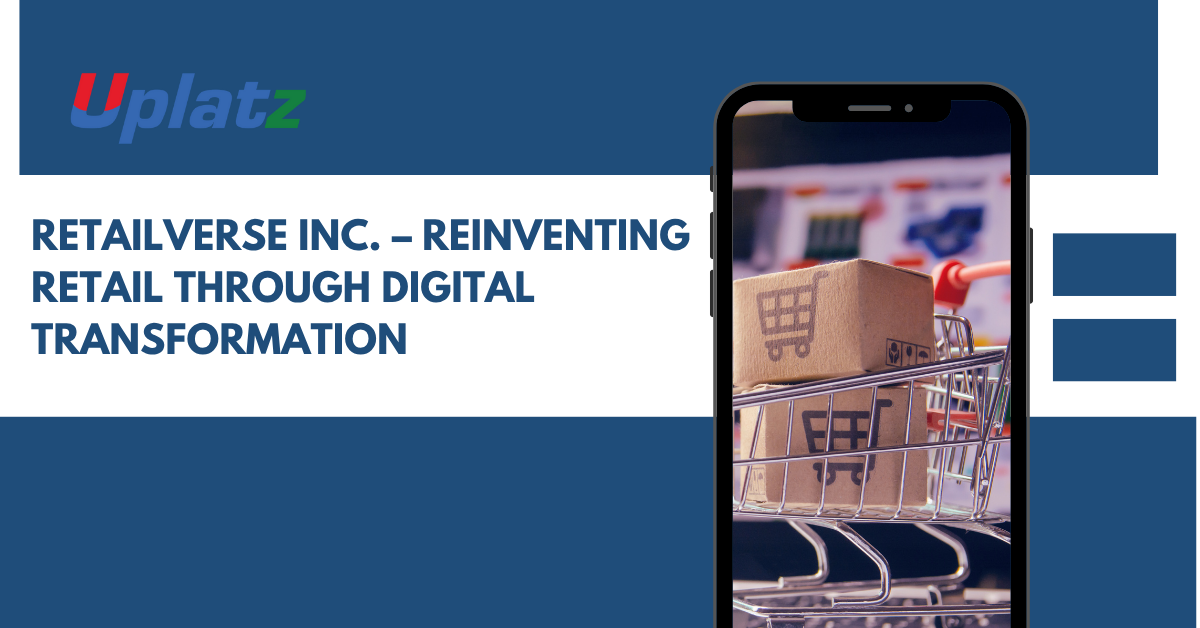📘 Case Study: RetailVerse Inc. – Reinventing Retail through Digital Transformation
Company Background
RetailVerse Inc. is a mid-sized fashion and lifestyle retail chain based in the United Kingdom, founded in 1997. By 2019, it operated 120 physical stores across the UK and Ireland, employing over 4,000 people and generating £480 million in annual revenue. The company primarily catered to middle-income, style-conscious consumers with fast fashion offerings for men, women, and children.
While RetailVerse built its success on an efficient supply chain and stylish yet affordable merchandise, it relied heavily on brick-and-mortar retail. Until 2020, less than 10% of its revenue came from online channels.

Learn more here: https://uplatz.com/course-details/tableau-comprehensive/239
Digital Wake-Up Call
The COVID-19 pandemic in 2020 forced temporary closure of all stores and exposed the company’s overreliance on physical retail. Online-native competitors like ASOS, Boohoo, and Zalando surged ahead. In response, RetailVerse accelerated investments in digital transformation, launching an ambitious 3-year roadmap called “RetailVerse Reboot.”
The initiative focused on three pillars:
- E-commerce Overhaul: Rebuilding the online shopping platform with advanced personalization, AI-powered product recommendations, and an omnichannel shopping experience (click-and-collect, virtual try-ons, live chat with stylists).
- Supply Chain Digitization: Integrating IoT sensors and predictive analytics into the supply chain to improve inventory forecasting, reduce wastage, and optimize logistics.
- Customer Engagement Transformation: Leveraging data analytics, social media listening tools, and a loyalty mobile app to drive customer retention, behavior-based segmentation, and targeted campaigns.
By 2023, the company had achieved a 26% YoY growth in online revenue and a 12% increase in average basket size online. However, the transformation was far from complete.
Strategic Tensions in 2025
As of mid-2025, RetailVerse finds itself at a crossroads:
- Legacy Infrastructure Drag: Despite progress, legacy IT systems are causing data silos and integration headaches. A complete migration to a cloud-native architecture is proposed but would cost £20 million and take 12–18 months.
- Data Ethics and Privacy Concerns: After launching hyper-personalized marketing, the company was criticized for using customer data too aggressively. Trust has eroded among some users.
- Store Reinvention or Closure? Physical stores still contribute 40% of revenue, but many are underperforming. Should the company repurpose them as experience centers or shut them down to fund digital investments?
- Talent Gaps: There’s a shortage of internal tech capabilities. Recruitment for data scientists, UX designers, and cloud engineers has been slow, and upskilling internal teams is underfunded.
Financial Snapshot (2024–25)
- Annual Revenue: £520 million
- Online Share of Revenue: 48%
- Gross Margin: 47%
- Tech Spend: 6% of revenue (industry average: 9%)
- Net Profit: £26 million
- Customer Retention Rate: 58%
- Average Customer Acquisition Cost (CAC): £29
- Employee Count: 3,200 (800 corporate, 2,400 retail staff)
🚦 Strategic Options Being Considered
- Cloud-First Migration: Invest in full digital infrastructure overhaul using Microsoft Azure or AWS cloud stack. Would enable real-time analytics, AI product management, and app scalability.
- Reinvent Physical Stores: Reimagine underperforming stores into hybrid “brand experience hubs” with AR/VR try-on, smart mirrors, and appointment-based stylists. Increase foot traffic and social engagement.
- Expand Loyalty and Subscription Model: Launch a paid loyalty program (£39/year) with perks like early access, exclusive collections, and free delivery. Aims to boost retention and increase customer LTV.
- Strategic Tech Partnerships: Collaborate with a global tech company (e.g., Salesforce, Shopify, Google Cloud) to co-create a digital retail ecosystem, reducing in-house development burdens.
🔍 Student Discussion & Analysis Questions
Digital Strategy & Transformation
- Evaluate the effectiveness of RetailVerse’s digital transformation strategy so far. What are its strengths and blind spots?
- Should RetailVerse pursue a full cloud-native migration now? What are the trade-offs in cost, risk, and competitive advantage?
- How can the company balance physical and digital retail in the post-pandemic era? Should stores be reimagined or closed?
Customer-Centric Innovation
- Design a new customer journey that merges physical and digital touchpoints. What technologies and experiences should be prioritized?
- Critically assess the proposed loyalty subscription model. What data should RetailVerse use to test its viability and optimize pricing?
- How should RetailVerse address data privacy and rebuild customer trust? What governance frameworks and communication strategies are required?
Organizational and Talent Strategy
- How can RetailVerse close its tech talent gap effectively? Should it build internal capabilities, outsource, or acquire a startup?
- What internal cultural shifts are necessary for sustained digital innovation? How should leadership drive this change?
Long-Term Strategic Vision
- Imagine it’s 2030. What should RetailVerse look like if it succeeds? Describe its business model, customer experience, and competitive positioning.
- What are the biggest risks in RetailVerse’s digital transformation? How can they be managed through scenario planning and agility?
